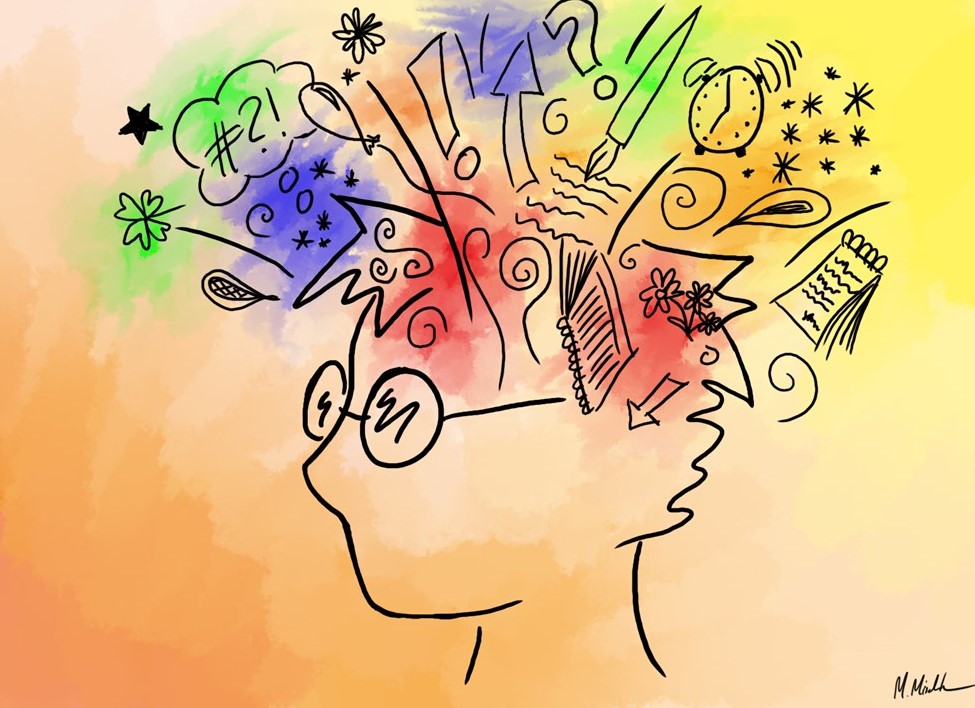Transcranial direct current stimulation in ADHD
Use of tDCS in children and adolescents with ADHD to improve cognitive functions and behavioral control
Children and adolescents with Attention Deficit Hyperactivity Disorder (ADHD) find it much harder to control their concentration and behavior than other children of the same age. As a result, they are often very limited and, despite normal or high intelligence, often show lower learning success and poorer school performance. Many studies show that the abnormalities in attention, learning and behavior control are associated with a change in brain activity in children and adolescents with ADHD. A new method to influence brain activity is transcranial direct current stimulation (tDCS). This method uses a weak current to slightly increase the excitability of the underlying brain area. Scientific and clinical studies in recent years have shown that transcranial direct current stimulation can positively influence sensory, motor and cognitive functions.
Children and adolescents with ADHD show reduced activity in certain frontal areas (e.g. right inferior frontal gyrus, rIFG), which is associated with impairment of various cognitive functions. With the help of tDCS, cortical excitability can be increased in these corresponding areas. In a first study on the stimulation of rIFG in adolescents with ADHD, we have already found evidence of a positive effect of (anodic) stimulation on attention control (Breitling et al., 2016). However, a computer simulation showed that the application of classical tDCS with large rubber electrodes generated an unspecific current flow in large parts of the brain. In contrast, when high definition tDCS (HD-tDCS) is used, a ring arrangement of the electrodes can be used to achieve a focal current flow that acts specifically on the target region. We therefore want to investigate whether HD-tDCS of the rIFG leads to comparable improvements in working memory and behavioral control as classical tDCS and whether the methods lead to different electrophysiological changes in brain activity.
Various studies have shown that repeated application of tDCS induces neuroplasticity and thus possibly longer-term effects can be achieved. Therefore, it will be further investigated whether repeated application of HD-tDCS of the rIFG during a cognitive task leads to significant and long-lasting improvements in working memory and behavioral control and has a positive effect on ADHD symptoms.
In the next few years, we will therefore focus on the long-term effects of tDCS as a therapy for ADHD. You can find further information on this topic under:STIPED
You can find an article about our research here. (PDF)
Project leader: PD Dr. Kerstin Krauel
Project manager: Carolin Breitling
Collaboration: Dr. Dannhauer, Scientific Computing and Imaging Institute, University of Utah, Salt Lake City; Dr. Zähle, Universitätsklinik für Neurologie, Universität Magdeburg
Duration: 01.01.2016 - 31.12.2018
For questions about this project please contact: Carolin Breitling
Publications from this project:
Breitling, Carolin; Zaehle, Tino; Dannhauer, Moritz; Bonath, Björn; Tegelbeckers, Jana; Flechtner, Hans-Henning;
Krauel, Kerstin (2016). Improving interference control in ADHD patients with transcranial direct current stimulation (tDCS) In: Frontiers in cellular neuroscience. - Lausanne: Frontiers Research Foundation; Bd. 10.2016, Art.-Nr. 72.








